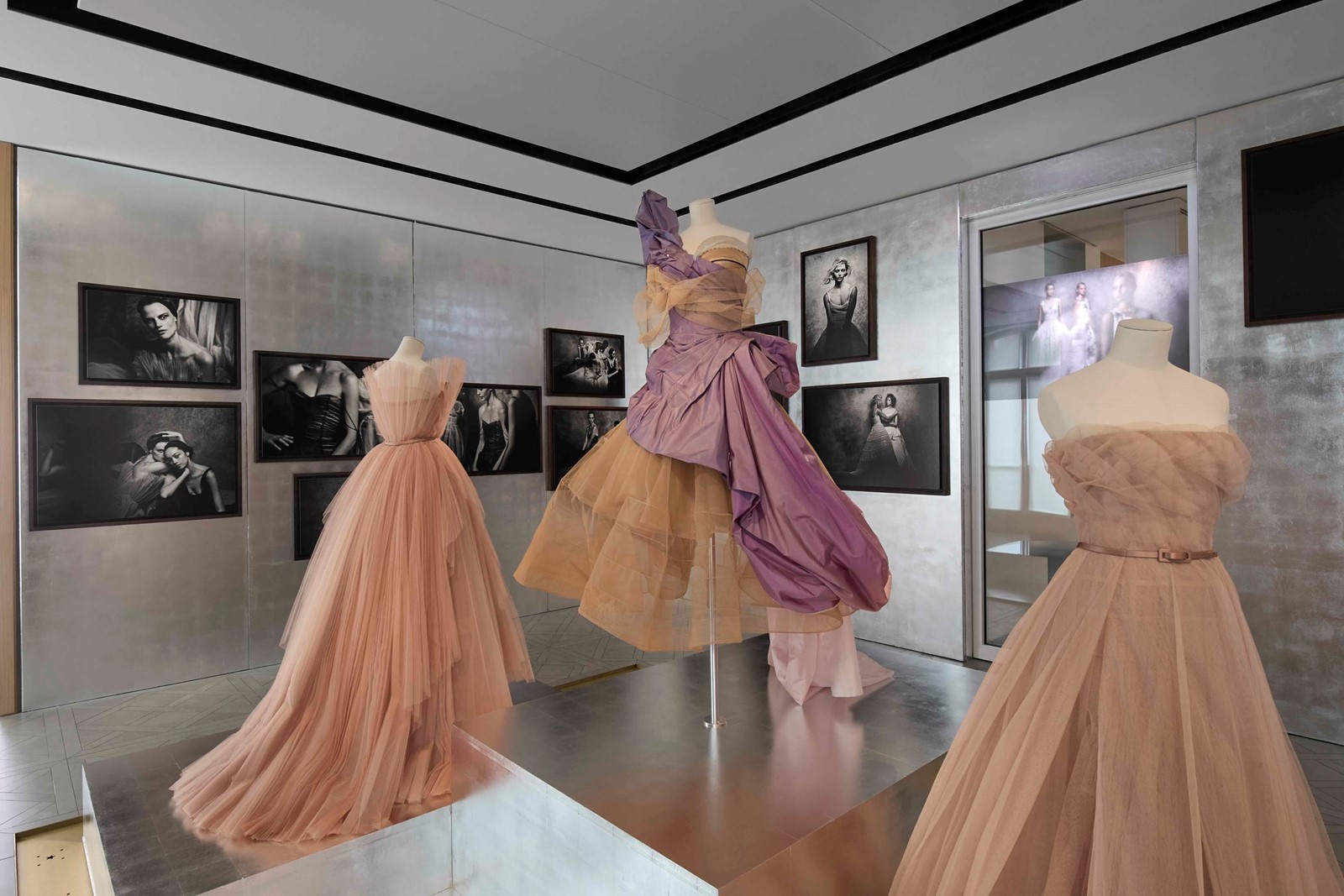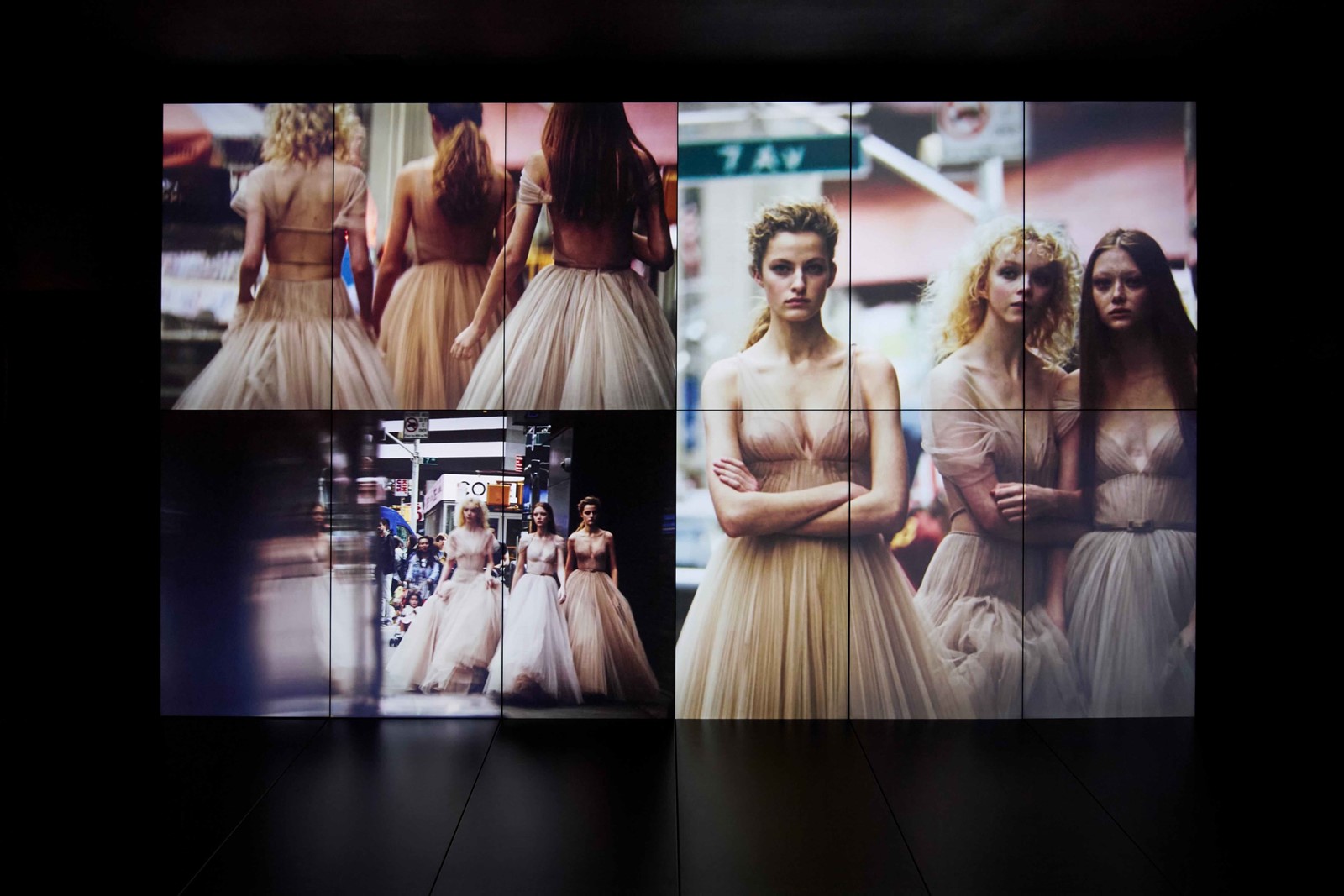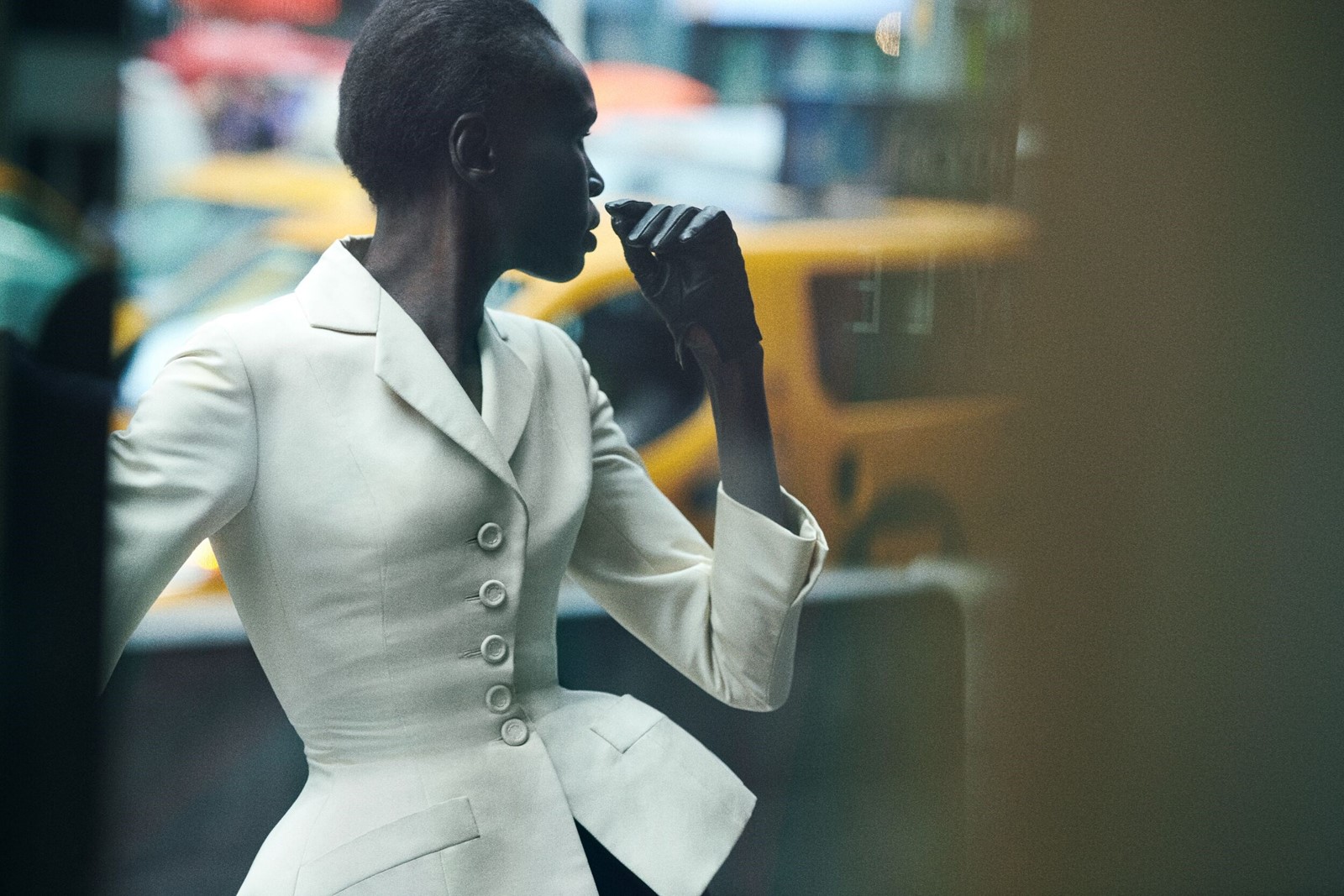The photographer Peter Lindbergh, who died in 2019, spent 30 years documenting Christian Dior, through the work of five different living artistic directors, while delving backward to reanimate the archive of its founder, too. His first was a couture shoot for Vogue Paris in 1988; his last, an epoch-scrambling book spanning the entire then-71 year history of the house, commissioned by Dior in 2018. The body of work in the intervening years forms the spine of the fittingly titled Dior/Lindbergh exhibition. It opened this week at La Galerie Dior, the museum established in Dior’s historic headquarters at 30 Avenue Montaigne that, at 2,000 square metres, is the largest fashion-dedicated exhibition space in the city, branded or otherwise.
Curated by Olivier Flaviano, director of La Galerie Dior, the space functions to tell the story of Dior to the well-versed and uninitiated alike, reiterating key fragments of house mythology (Dior’s love of flowers, the influence of his mother and his background in art) alongside a few more obscure gems to surprise aficionados – I have authored about four of the books in the Galerie Dior gift shop, so I generously count myself among them. I was shocked at the sheer size of the famous “lucky star” the almost psychotically superstitious Dior famously found outside the doors of Avenue Montaigne and took as a sign of good fortune for his fledgling couture venture in 1946 (in retrospect, it’s probably a piece of a car hubcap. Different strokes … ). And indeed, retelling the story of Dior from new perspectives is both a challenge and a thrill for Flaviano and the Dior team. For want of a better pun, Lindbergh provides a new ‘lens’ through which to observe the house archives, with clothes selected from those featured in his rich back catalogue of work and displayed alongside around 100 prints, making the clothes seem to leap to three dimensions from the photograph.

Those photographs lead the show: there’s a dominance of black and white, which reflect key colours of Dior and its mythology: the ‘Tailleur Bar’ is monochrome; while the images of Dior cemented in popular imagination tend to be black and white, either as mid-century couture photographs, or the illustrations of René Gruau. So its east for the majority of looks to be stripped of colour, in direct homage to the images surrounding them. There are other homages – during the 2018 shoot for Dior, Lindbergh was himself photographed at work by his son, Jeremy Brodbeck, and the images hang here, like true ‘behind the scenes’ of the final prints.
There are also contact sheets and test shots featuring Lindbergh’s handwritten notations: Flaviano asserts that it is the first time Lindbergh’s estate have ever allowed these to be exhibited. And for a man who once said that “What‘s so striking about black and white is how it really helps a sense of reality to come through,” there’s a sense of real life in all these images, especially a series of Dior garments captured on the streets of New York in dynamic motion – also never before seen. Then again, exquisite couture dresses in studios are also given a feel of movement, their sedate pomp and circumstance deflated and brought back to real life as opposed to the artifice of fashion. Interestingly, seeing the clothes up close in the case makes a case for the power of Lindbergh to transform them, and their meaning.

There’s a Dior style from 1948, called Cocotte – it’s a famous dress from the ‘Zig-Zag’ line with a handspan waist and a great bustle of fabric arching in back, as if it comes straight from the 1880s. On the mannequin, it looks like a period piece – it’s fabulous, but anchored in the past. In Lindbergh’s image, on the model Carolyn Murphy, it suddenly feels vibrant and utterly contemporary. The same is true of a heavily beaded suit by Gianfranco Ferré, imbued with a sly sensuality, and with a sequence of masterpieces from John Galliano’s debut for the couture house – which, interestingly, Lindbergh shot once but used for editorials for both American and Italian editions of Vogue. The American shots are poised and posed; the Vogue Italia images messier, unrehearsed and alive. Which is perhaps the word that leaps to mind with all these Lindbergh images – something they, somehow, breathe back into the clothes, too.
Dior/Lindbergh is on show at La Galerie Dior in Paris until 4 May 2025.
